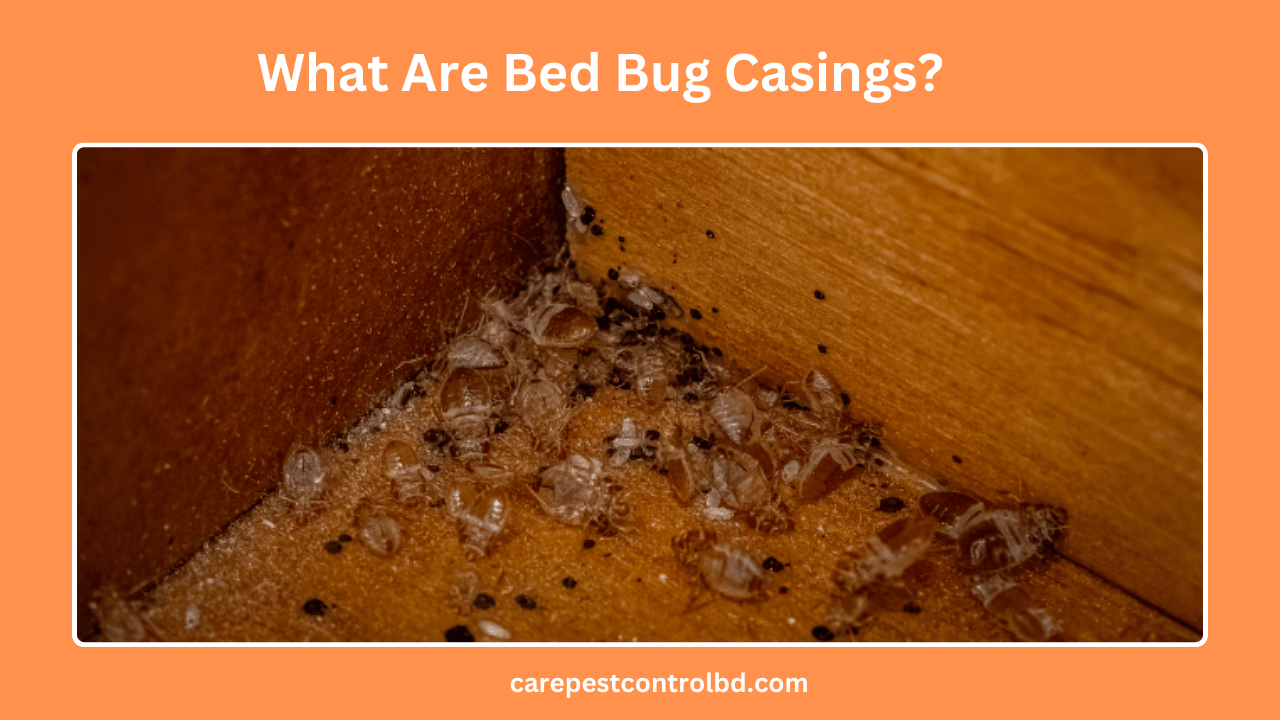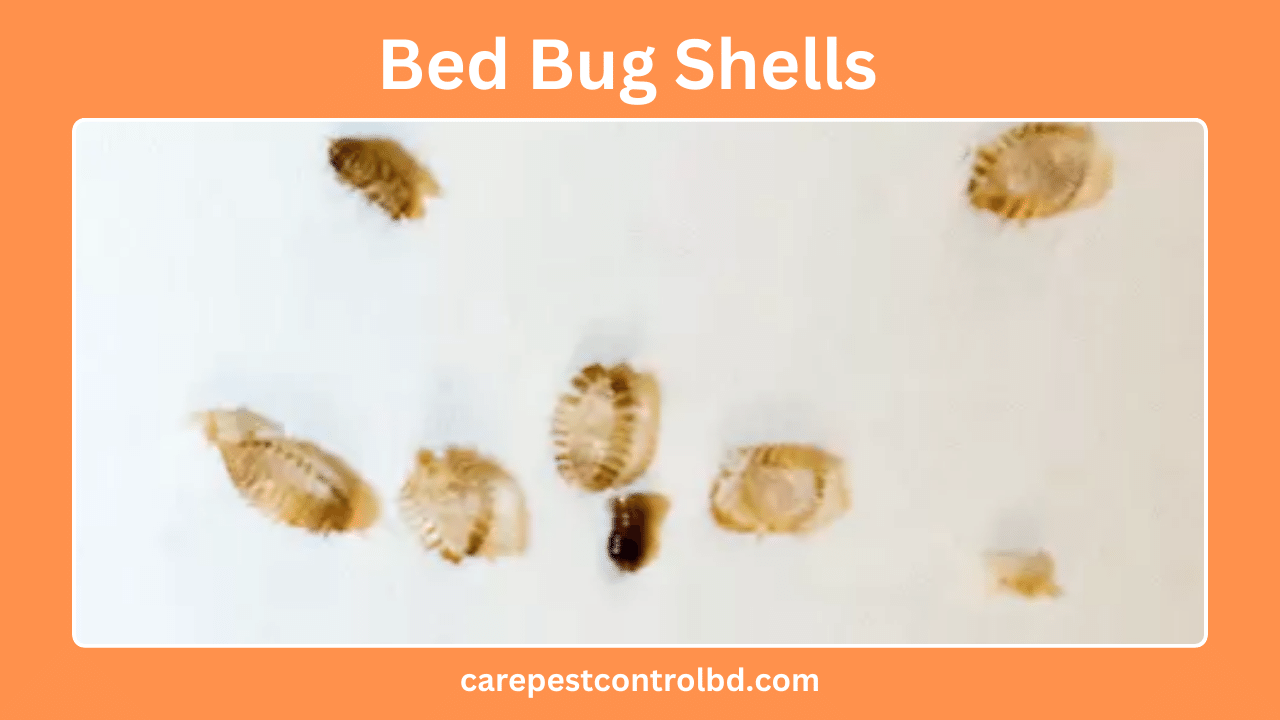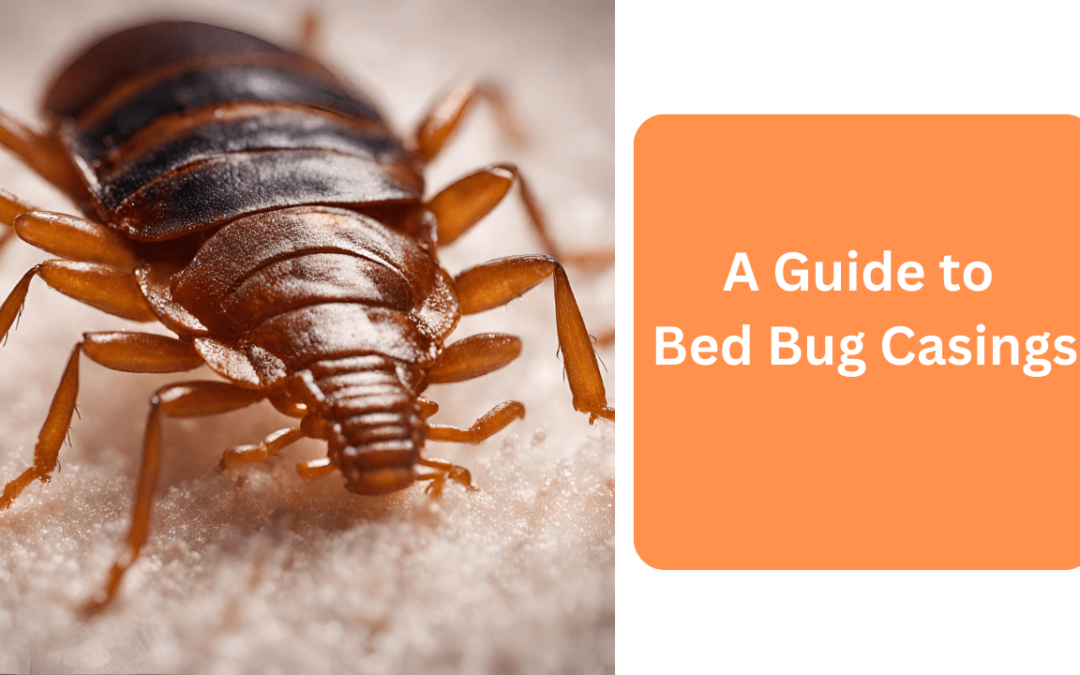Imagine waking up to find tiny, apple-seed-sized creatures and their eerie BED BUG CASINGS in your bed. These little brown nuisances, flat and oval-shaped, are like tiny vampires in your sheets. They’re parasites, feasting on blood and ballooning in size during their ten-minute gourmet sessions on you.
Table Of Content
Imagine waking up to find tiny, apple-seed-sized creatures and their eerie BED BUG CASINGS in your bed – welcome to the world of Cimex lectularius, or bed bugs. These little brown nuisances, flat and oval-shaped, are like tiny vampires in your sheets. They’re parasites, feasting on blood and ballooning in size during their ten-minute gourmet sessions on you.
But here’s the real kicker: these pests are the Houdinis of the insect world. They can vanish for months without a single blood meal, and when they reappear, it’s worse than before. They’re tough little critters, having outsmarted many products designed to wipe them out. The females are the worst – laying hundreds of eggs in their lifetime and starting their family within just a month!
If you’re getting the creepy-crawlies thinking about this, check your bed for these tell-tale signs:
- Rusty or reddish-brown stains on your sheets, a gruesome reminder of bed bugs meeting their end.
- Dark spots that spread like ink on fabric – yup, that’s bed bug poop.
- Tiny, white eggs hidden in the seams of your mattress.
- The bed bugs themselves, scurrying around your bed.
- Empty shells or casings, the remnants of their growth sprees.
Bed bugs are more than just a nuisance; they’re a full-blown invasion in your private space. Watch out, and don’t let the bed bugs bite!
What Are Bed Bug Casings?
Step into the secret life of bed bugs and their mysterious world of ‘casings,’ a term for the shed exoskeletons of these tiny invaders. Like many insects, bed bugs wear their skeletons on the outside, known as an exoskeleton. They must periodically shed this casing as they grow, revealing a fascinating growth cycle.
Post-mating, the female bed bug embarks on an egg-laying spree, depositing one to five eggs daily. Each egg hatches into a nymph within about ten days, leaving behind an empty shell, the nymph’s first discarded casing.
Five developmental stages mark the journey of a bed bug nymph, each requiring a blood meal to transition. The larva sheds its casing at each stage’s end, leaving a breadcrumb trail of its growth. These casings, left behind by nymphs, are critical indicators of their stage:
- 1st stage nymphs are tiny at 1.5 mm.
- 2nd stage nymphs, the size of a pinhead at 2mm.
- 3rd stage nymphs are slightly larger at 2.5 mm.
- 4th stage nymphs, growing to 3mm.
- The final 5th stage reaches about 4.5mm.
With each shed shell, the nymph darkens, evolving into its final form. Upon reaching maturity, the bed bug attains a dark reddish-brown hue and no longer sheds. These casings, a tell-tale sign of a bed bug infestation, are clues to the life stages of these elusive, blood-feeding pests.

Where To Look For Bed Bug Casings
Imagine a hidden army of bed bugs banding together in your most personal spaces. The larger their numbers, the more evidence they leave behind in the form of bed bug casings. These casings, a sign of an escalating infestation, are most often found in the very place you seek rest: your bed. Check the seams, folds, hidden crevices of mattresses or box springs, and even behind headboards for these tell-tale signs.
But don’t be fooled by their name; bed bugs aren’t confined to just beds.
They’re crafty invaders, taking refuge in a variety of unsuspecting places:
- Cozying up in the corners of furniture.
- Lurking in your clothes and items stashed under beds.
- Hiding in upholstered chairs, recliners, and sofas.
- Sneaking into cracks in wood molding and ceiling-wall junctures.
- Camouflaging behind wall-mounted objects like pictures, mirrors, and switch covers.
- Nestling under loose wallpaper and within bookbindings.
These pests even make high-tech hideouts in clocks, TVs, and smoke detectors!
Contrary to popular belief, bed bugs aren’t picky about cleanliness. They’re as likely to infest a spotless hotel room, meticulously cleaned daily, as an average home. If these unwelcome guests reside in your space, the most brilliant move is to call in the cavalry: a pest control professional. They’re equipped to assess the situation and devise an effective battle plan to reclaim your home from these elusive invaders.

Do Bedbugs Have A Hard Shell?
Do Bedbugs Have A Hard Shell this is most common questions the answe is no, bedbugs do not have a hard shells like beetles or snails. Instead, they are equipped with what is known as an exoskeleton. This exoskeleton is not rigid or stiff but is somewhat flexible. It provides bedbugs with protection and support, but it’s not impenetrable or as challenging as shells found in other insects.
This exoskeleton is made of chitin, a common material in many insects. Chitin provides a lightweight yet effective barrier for the bedbug, allowing it to move quickly and flexibly, which is crucial for its survival and stealthy movements. The flexibility of the exoskeleton is essential for bedbugs as they are known to squeeze into highly narrow spaces, often as thin as a credit card. This ability to compress and navigate through tiny crevices is essential for their lifestyle, involving evading detection and living close to their human hosts.
Another exciting aspect of a bedbug’s exoskeleton is its role in the insect’s growth process. Bedbugs undergo a process known as molting, where they shed their exoskeleton several times throughout their life cycle as they grow. Each stage of growth, or instar, requires the bedbug to molt, leaving behind casings. These casings are a tell-tale sign of a bedbug infestation but are often the only visible evidence, as bedbugs can be elusive.
Despite not having a hard shell, bedbugs are remarkably resilient. Their exoskeleton provides enough protection to withstand many traditional pest control methods. This resilience, combined with their rapid reproduction rate and ability to survive for months without feeding, makes them formidable pests. The misconception that bedbugs have a hard shell often leads to underestimating their resilience and adaptability, making them a persistent problem in residential and commercial settings.

How Do You Identify A Bed Bug Shell?
Venture into the often-overlooked world of bed bugs, where each tiny shell holds a story as intriguing as it is unsettling. Picture a bed bug’s body, about the size of an apple seed, oval-shaped with a glossy, smooth surface that could easily be mistaken for a stray coffee bean. These predominantly brown shells are the discarded remnants of a bed bug’s growth, left behind like eerie souvenirs of their presence.
In the life of a female bed bug, an astonishing reproductive feat takes place. She lays approximately 1 to 7 eggs daily, amassing hundreds over her lifetime. These eggs, crucial in tracking and understanding bed bug infestations, are surprisingly visible to the naked eye. Unlike the more significant, familiar rice grains, bed bug eggs are minuscule, only about 1 millimeter long, with a distinctive dark grayish hue and an elongated oval shape. Each egg is capped with a hinged cover, which, upon hatching, flips open to release a nymph into the world.
These small, brown, wingless insects defy the typical insect diet by forgoing plant material. Instead, they thrive in the hidden corners of homes, particularly favoring moist environments like basements and attics. Contrary to some beliefs, bed bugs are not daytime roamers; their activity peaks when night falls.
Interestingly, there’s often confusion between bed bugs and other small, winged insects that inhabit homes. These winged creatures starkly contrast to bed bugs, primarily due to their flying ability. For those concerned about an infestation, distinguishing between these pests is crucial. Preventative measures, such as targeted insecticide treatments, can be effective in areas where bed bugs are known to dwell, providing a line of defense in the ongoing battle against these elusive and persistent invaders.

What Color Are Bed Bug Casings
Dive into the shadowy world of bed bugs, where the lifecycle and habits of these tiny pests are as fascinating as they are alarming. Adult nymphs, often cloaked in a brown exoskeleton, can also display a lighter hue, showcasing the diversity in their development stages. Each bed bug boasts a unique anatomy with six legs and as many antennas, coupled with segmented bodies that tell a tale of intricate biological design.
An adult bed bug is a prolific breeder who lays up to 600 eggs annually. These eggs, resembling tiny pearls, are coated in a sticky substance, allowing them to adhere to an array of surfaces easily. The adult bed bugs are a sight to behold, with their reddish-brown coloration and a flat body that can swell like a balloon when engorged with blood.
When exterminating these resilient creatures, an array of methods is employed. Heat treatments emerge as a formidable weapon, swiftly eliminating bed bugs and their eggs within a single day, a speed unmatched by other methods. For those who escape the heat, insecticides are a secondary line of defense. Cold treatments, though effective, are slower and often require additional methods for complete eradication.
Bed Bug Casings FQA
Bed Bug Casing Size
Bed bug casings, often minuscule and elusive, typically measure around 1mm long. Compared to a tiny seed, these casings show bed bugs’ growth and development stages. Their petite size requires a keen eye for detection, making them a critical factor in early infestation identification.
Bed Bug Casing Color
Bed bug casings usually exhibit a translucent to light brown hue, mirroring the development stage of the bed bug. This coloration, while subtle, provides a natural camouflage in their typically chosen habitats, such as mattresses, furniture, and floor cracks. Recognizing this color can be pivotal in identifying an infestation in its early stages.
Bed Bug Casing Looks Like
Bed bug casings resemble thin, hollow shells, a mere shadow of the bed bug’s former self. They often take on an oval shape, echoing the bed bug’s natural form. These casings, the exoskeletons shed by growing bed bugs, offer a ghostly yet precise snapshot of their previous occupant’s size and shape.
Are Bed Bug Casings Hard?
Contrary to some beliefs, bed bug casings are not hard. They possess a somewhat delicate, crinkly texture akin to a thin layer of shed skin. This fragile nature of the casings makes them relatively easy to crush, distinguishing them from the more rigid shells of other insects.
Bed Bug Casings Identification
Identifying bed bug casings involves recognizing their size, color, and shape. Key indicators include their minuscule, seed-like size, translucent to light brown color, and hollow, oval appearance. Spotting these casings often requires thoroughly examining bedding, furniture seams, and other crevices where bed bugs are likely to dwell. Understanding these characteristics is essential in confirming the presence of bed bugs and taking timely action to address the infestation.
Relavent Article
If you are looking for Bedbugs Services in Dhaka. Call Us Today

